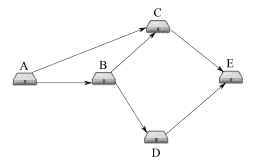

|
Routing on the Internet
An Introduction |
|
Prof. David Bernstein
|
| Computer Science Department |
| bernstdh@jmu.edu |



|
Routing on the Internet
An Introduction |
|
Prof. David Bernstein
|
| Computer Science Department |
| bernstdh@jmu.edu |














Finding Paths to E


routed (that advertises using UDP)








